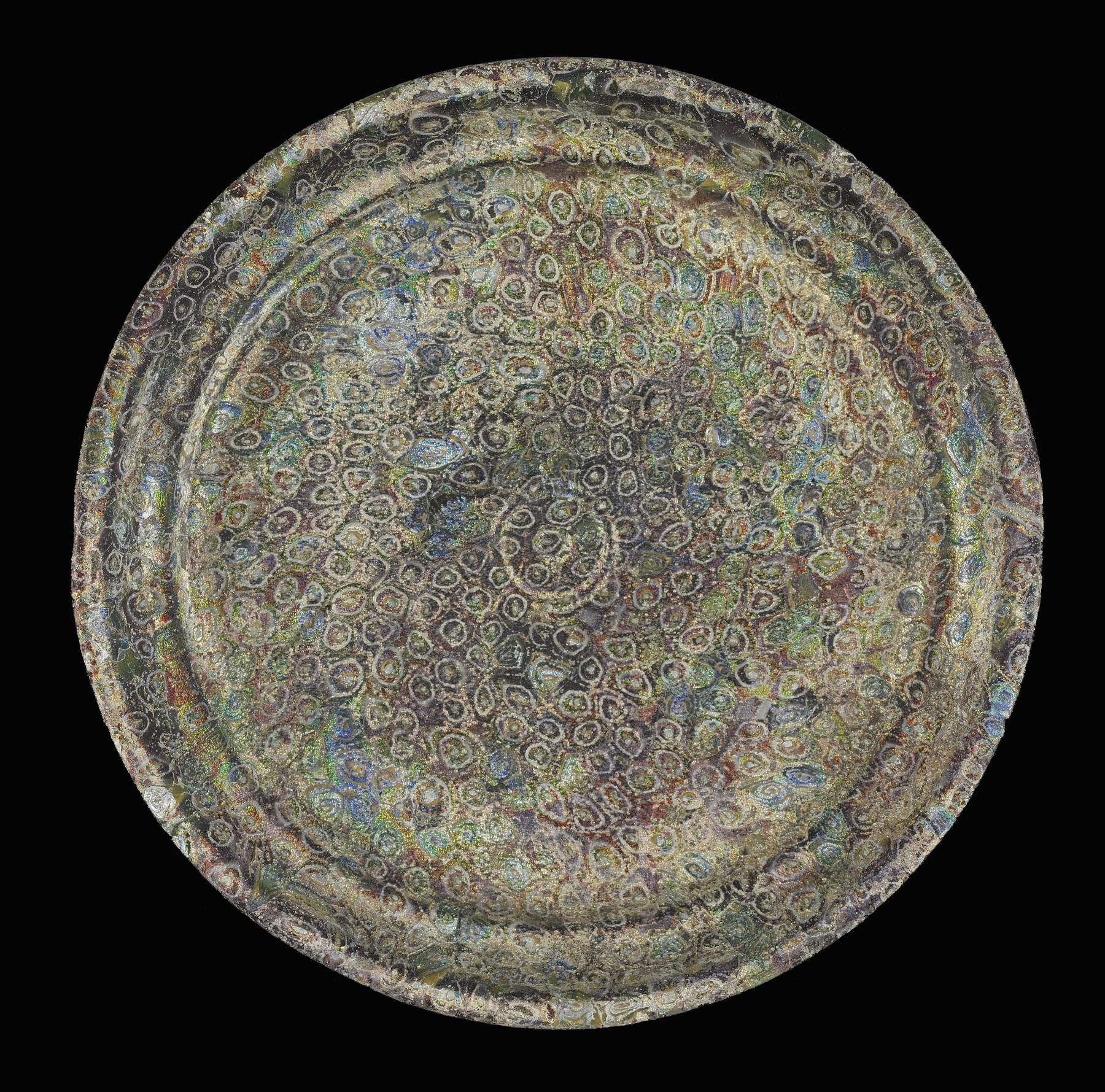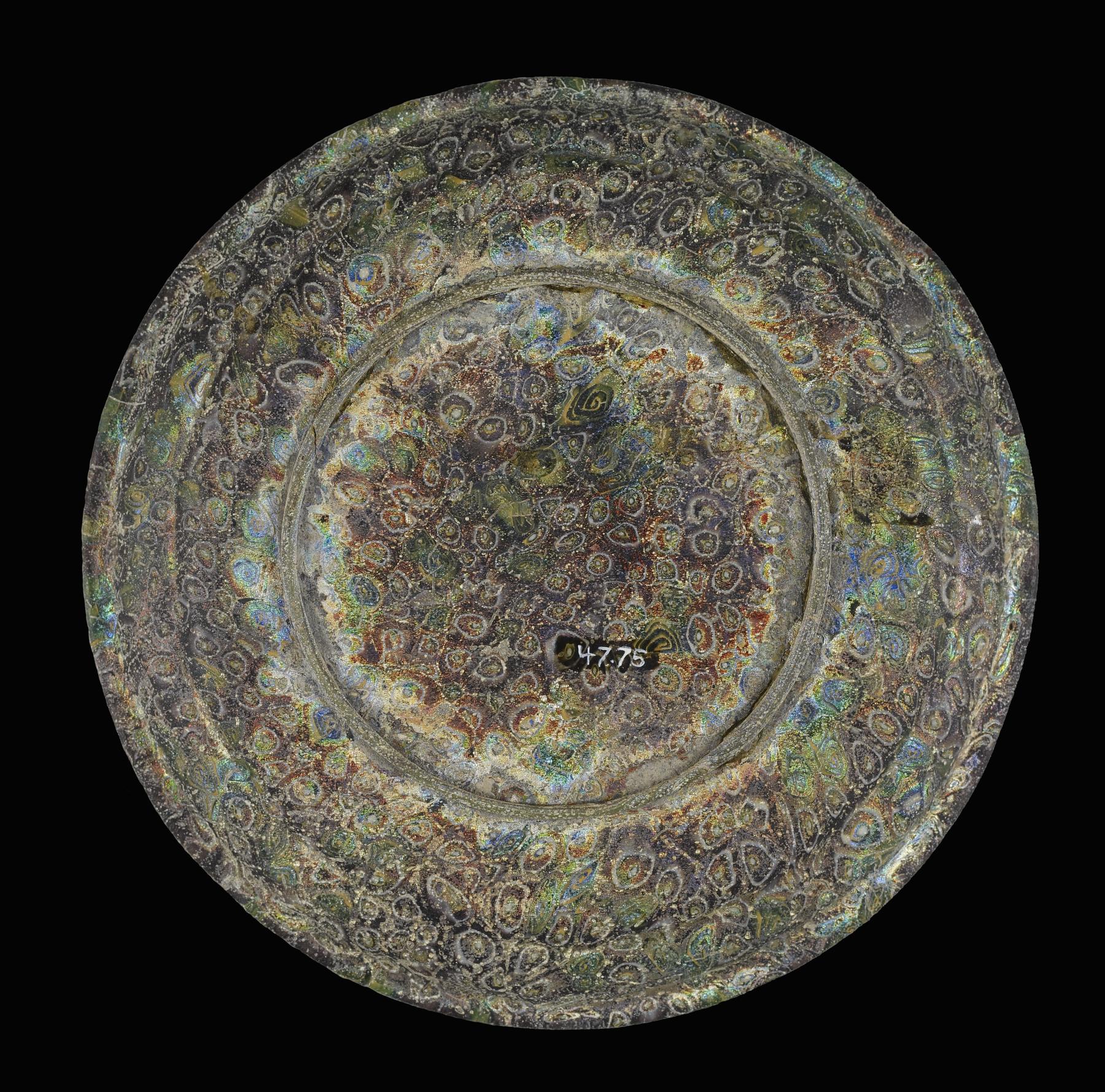Mosaic Plate
Makers of mosaic glass cut thin slices from long, thin rods known as canes. The slices were placed side by side on a marble slab and heated in a furnace until they fused together. The soft flat disk of fused glass was then placed over a bowl-shaped form and heated until it slumped into the desired shape.
Provenance
Provenance (from the French provenir, 'to come from/forth') is the chronology of the ownership, custody, or location of a historical object. Learn more about provenance at the Walters.
Dikran Kelekian, New York and Paris [date and mode of acquisition unknown] [said to be from near Jerusalem]; Henry Walters, Baltimore, 1912, by purchase; by bequest to Walters Art Museum, 1931.
Exhibitions
| 2007-2008 | Salviati and the Antique: Ancient Inspiration for Modern Glassmaking. The Walters Art Museum, Baltimore. |
| 1984 | The Taste of Maryland: Art Collecting in Maryland 1800-1934. The Walters Art Gallery, Baltimore. |
| 1982 | 3000 Years of Glass: Treasures from The Walters Art Gallery. The Walters Art Gallery, Baltimore. |
Conservation
| Date | Description | Narrative |
|---|---|---|
| 4/12/1982 | Treatment | cleaned |
| 7/15/2013 | Examination | Examined for exhibition |
| 7/15/2013 | Examination | The plate was examined and documented before exhibition at the Walters in 2013. The plate has been broken in half and repaired in the past. The old repair is stable. There are no major losses. Three very small losses (less than .2 cm. long) are present on the reverse along the break line. The surface of the glass is irregularly weathered and eroded. The original glass is multi-colored sections of canes set in a transparent blue glass matrix. |
Measurements
H: 3/4 × Diam: 6 5/16 in. (1.9 × 16 cm)
Credit Line
Acquired by Henry Walters, 1912
Location in Museum
Accession Number
In libraries, galleries, museums, and archives, an accession number is a unique identifier assigned to each object in the collection.
In libraries, galleries, museums, and archives, an accession number is a unique identifier assigned to each object in the collection.
47.75




